
|
Now it is 7.2 mag (Oct. 4, Peter Bus), much brighter than originally expected in the extremely low sky at dawn. It will approach down to 0.4 A.U. to the sun on Oct. 28, and it will reach to 4 mag in mid October. However, the condition in the Northern Hemisphere is very hard. It locates extremely low, slightly over the horizon, in the morning sky from late September to mid October, and in the evening sky from mid October to late October. Then it will never be observable again. In the Southern Hemisphere, it will appear in the evening sky at 4-5 mag in early November, then it keeps observable while fading gradually, although it will not locate very high.
Date(TT) R.A. (2000) Decl. Delta r Elong. m1 Best Time(A, h)
Oct. 6 12 27.96 26 58.0 1.308 0.703 32 7.8 4:34 (240, 5)
Oct. 13 13 5.03 24 22.5 1.073 0.574 31 6.4 4:39 (242, 2)
|
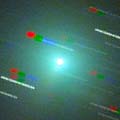
|
It reached to 7.2 mag on July 14 (Maik Meyer), then it faded down to 9.0 mag on Aug. 13 (Carlos Labordena). Now it is not observable. In the Southern Hemisphere, it will appear in the morning sky in late October at 13 mag, then it keeps observable while fading gradually. In the Northern Hemisphere, it will appear again at 14 mag in the very low sky at dawn in mid November. But it will be fading while keeping extremely low.
Date(TT) R.A. (2000) Decl. Delta r Elong. m1 Best Time(A, h)
Oct. 6 12 25.32 -25 37.9 2.259 1.376 21 11.7 4:34 (285,-25)
Oct. 13 12 23.16 -27 27.7 2.319 1.452 22 12.1 4:39 (291,-19)
|

|
Now it is faint as 14.1 mag (Oct. 5, Seiichi Yoshida). It has been observable since late July, but it keeps faint in this season. It has never be brighter than 14 mag yet.
Date(TT) R.A. (2000) Decl. Delta r Elong. m1 Best Time(A, h)
Oct. 6 6 28.69 30 18.2 5.766 5.954 95 13.6 4:34 (287, 77)
Oct. 13 6 29.93 30 22.1 5.659 5.956 102 13.6 4:39 (308, 83)
|
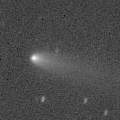
|
Now it is bright as 12.6 mag (Oct. 5, Seiichi Yoshida). Strongly condensed and easy to see visually. It is observable in very good condition at 13 mag for a while in this autumn.
Date(TT) R.A. (2000) Decl. Delta r Elong. m1 Best Time(A, h)
Oct. 6 0 4.88 -13 29.9 1.345 2.307 159 13.6 23:05 ( 0, 41)
Oct. 13 0 2.04 -14 7.9 1.383 2.315 152 13.7 22:35 ( 0, 41)
|

|
It was 14.1 mag on Oct. 1 (S. G. McAndrew), brightening well as expected. It will reach to 11 mag in 2008 spring. It will keep bright for a long time, however, it keeps moving in the southern sky for a while after this. In the Northern Hemisphere, it will appear at 13 mag from October to December in a short time, but very low and hard to observe. However, it will be visible visually at 11 mag in the evening sky from March to June in 2008. Then it becomes unobservable again. But it will appear in the morning sky again at 13 mag at the end of 2008, then it keeps bright and observable for a while.
Date(TT) R.A. (2000) Decl. Delta r Elong. m1 Best Time(A, h)
Oct. 6 8 42.65 -35 20.4 4.220 3.876 63 13.8 4:34 (322, 7)
Oct. 13 8 51.19 -36 30.3 4.136 3.830 65 13.7 4:39 (327, 9)
|
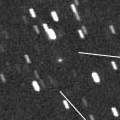
|
It will reach to 6 mag in January, and will be observable in good condition. Now it is 15.4 mag (Oct. 7, Masayuki Suzuki). Brightening rapidly, and it will become visible visually soon, although it was not visible visually, fainter than 14.6 mag, on Oct. 5 (Seiichi Yoshida). In the Northern Hemipshere, it keeps observable all night until mid December, then keeps observable until early February, when it fades down to 7.5 mag. In the Southern Hemipshere, it is not observable until late December. But after that, it keeps observable until it fades out.
Date(TT) R.A. (2000) Decl. Delta r Elong. m1 Best Time(A, h)
Oct. 6 7 12.95 88 24.2 1.525 1.890 94 14.4 4:34 (181, 36)
Oct. 13 11 7.69 88 21.5 1.418 1.818 96 14.0 4:39 (182, 35)
|

|
It brightened rapidly, and it is already bright and visible visually at 13.4 mag (Oct. 6, Seiichi Yoshida). It is observable at 13.5 mag in good condition from autumn to winter.
Date(TT) R.A. (2000) Decl. Delta r Elong. m1 Best Time(A, h)
Oct. 6 0 47.34 21 48.4 0.878 1.857 163 14.3 23:47 ( 0, 77)
Oct. 13 0 41.37 22 49.3 0.852 1.830 163 14.0 23:14 ( 0, 78)
|

|
It reached to 13.2 mag in last spring (May 12, Carlos Labordena). But now it is not observable. In the Southen Hemisphere, it will be observable again at 15 mag in November. But in the Northern Hemisphere, it will never observable again.
Date(TT) R.A. (2000) Decl. Delta r Elong. m1 Best Time(A, h)
Oct. 6 11 55.75 -15 50.1 2.984 2.044 16 14.0 4:34 (280,-14)
Oct. 13 12 10.22 -18 24.4 3.009 2.086 18 14.2 4:39 (284,-12)
|
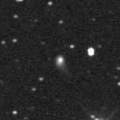
|
It is already bright and visible visually at 13.5 mag (Oct. 6, Seiichi Yoshida). It will reach to 10.5 mag and will be observable in good condition in 2008 autumn. It keeps observable in good condition for a long time while the comet is getting brighter slowly.
Date(TT) R.A. (2000) Decl. Delta r Elong. m1 Best Time(A, h)
Oct. 6 21 15.78 -7 55.7 3.652 4.319 126 14.2 20:17 ( 0, 47)
Oct. 13 21 14.08 -7 45.1 3.690 4.265 119 14.1 19:47 ( 0, 47)
|
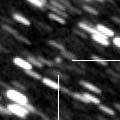
|
Now it is 15.8 mag (Sept. 2, R. Salvo). It keeps 15 mag for a long time until 2008 spring. It moves in the southen sky, so it keeps observable in good condition in the Southern Hemisphere, although it becomes low only in winter. It will never be observable again in the Northern Hemisphere.
Date(TT) R.A. (2000) Decl. Delta r Elong. m1 Best Time(A, h)
Oct. 6 16 49.27 -57 31.9 3.420 3.231 70 14.8 19:02 ( 24,-11)
Oct. 13 16 48.50 -57 42.4 3.508 3.221 65 14.8 18:52 ( 26,-13)
|
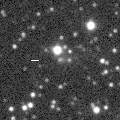
|
Now it is 15.7 mag (Sept. 16, Ken-ichi Kadota), brightening as expected. It will reach to 14 mag in next winter, and will be observable in good condition. It is expected to be visible visually. It keeps observable in good condition for a long time until 2008 spring.
Date(TT) R.A. (2000) Decl. Delta r Elong. m1 Best Time(A, h)
Oct. 6 7 6.72 25 56.8 2.573 2.716 87 14.9 4:34 (287, 67)
Oct. 13 7 16.33 25 23.9 2.473 2.699 91 14.8 4:39 (297, 72)
|

|
It has not been recovered yet because it had been unobservable for a long time. But it must be already bright as 15 mag. It will appear in the evening sky in October, then it will be getting higher gradually. It keeps observable at 14-15 mag in the evening sky until January. Then it keeps locating in the evening sky until April when it becomes fainter than 18 mag.
Date(TT) R.A. (2000) Decl. Delta r Elong. m1 Best Time(A, h)
Oct. 6 18 45.20 -52 31.8 1.425 1.685 86 15.2 19:02 ( 11, 1)
Oct. 13 19 4.96 -51 20.2 1.431 1.645 83 15.0 18:52 ( 11, 2)
|
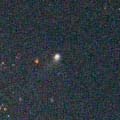
|
Now it is bright and visible visually at 14.1 mag (Oct. 5, Seiichi Yoshida). It had been observable in good conditoin for a long time since spring, but it will be getting lower and lower after this, and will be unobservable in November. But it will be observable at 14 mag at high location again in 2008 spring.
Date(TT) R.A. (2000) Decl. Delta r Elong. m1 Best Time(A, h)
Oct. 6 16 45.96 -1 9.2 6.072 5.643 60 15.0 19:02 ( 62, 32)
Oct. 13 16 46.34 -1 8.8 6.164 5.636 54 15.1 18:52 ( 66, 29)
|

|
Now it is 15.9 mag (Sept. 8, Ken-ichi Kadota), brightening as expected. It will reach to 13.5 mag in the southern sky in 2008 spring and summer. In the Southern Hemisphere, it keeps observable for a long time after this. But in the Northern Hemisphere, it will be lower than 10 degree in November. Then it keeps locating extremely low until January, and will be unobservable after that. Then it will be observable again at the end of 2008, when the comet will already fade down to 15 mag.
Date(TT) R.A. (2000) Decl. Delta r Elong. m1 Best Time(A, h)
Oct. 6 1 10.42 -36 42.3 2.765 3.572 138 15.2 0:15 ( 0, 18)
Oct. 13 1 3.07 -38 55.2 2.760 3.522 133 15.2 23:35 ( 0, 16)
|
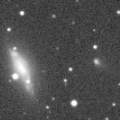
|
Now it is 15.5 mag (Oct. 1, J. Maria Ruiz M). It keeps observable in good condition until it fades out in 2008 spring. It may be visible visually, but it was not visible, fainter than 14.3 mag, on Oct. 6 (Seiichi Yoshida).
Date(TT) R.A. (2000) Decl. Delta r Elong. m1 Best Time(A, h)
Oct. 6 2 40.08 37 35.2 1.076 1.939 138 15.4 1:44 (180, 87)
Oct. 13 2 36.48 39 43.7 1.042 1.932 142 15.3 1:13 (180, 85)
|
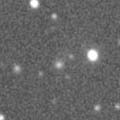
|
It was observed at 16 mag in 2007 spring and summer. Now it is not observable. In the Southern Hemisphere, it will appear again at 16 mag in winter, then it keeps 16 mag and observable in good condition until 2008 summer. In the Northern Hemisphere, it will never be observable again.
Date(TT) R.A. (2000) Decl. Delta r Elong. m1 Best Time(A, h)
Oct. 6 12 57.95 -26 56.3 3.627 2.729 22 15.4 19:02 ( 75,-27)
Oct. 13 13 11.23 -28 40.2 3.622 2.715 21 15.3 18:52 ( 73,-29)
|
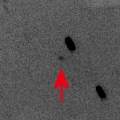
|
It will reach to 8.5 mag from January to March, and will be observable in good condition. In the Northern Hemisphere, it keeps observable in good condition until 2008 July when it becomes fainter than 18 mag. Now it is 16.9 mag (Sept. 3, Ken-ichi Kadota), but it will be brightening rapidly after this. It will be visible visually in November.
Date(TT) R.A. (2000) Decl. Delta r Elong. m1 Best Time(A, h)
Oct. 6 21 54.43 -34 26.5 1.052 1.810 123 15.7 20:55 ( 0, 21)
Oct. 13 21 50.00 -34 3.6 1.055 1.750 116 15.3 20:23 ( 0, 21)
|
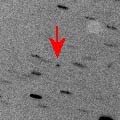
|
It brightened very rapidly in a short time, and now it reached to 15.5 mag (Oct. 1, J. Maria Ruiz M). It will be observable at 14.5-15 mag in an excellent condition from October to February. It may be visible visually, but it was not visible, fainter than 14.4 mag, on Oct. 5 (Seiichi Yoshida).
Date(TT) R.A. (2000) Decl. Delta r Elong. m1 Best Time(A, h)
Oct. 6 5 32.49 33 36.8 2.106 2.592 107 15.8 4:34 (341, 89)
Oct. 13 5 37.27 33 44.1 2.015 2.581 113 15.5 4:13 ( 0, 89)
|
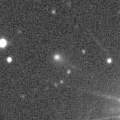
|
First return of a new periodic comet discovered in 1998 at 14 mag. Now it is 15.6 mag (Sept.. 10, Mt. Lemmon Survey), brightened as expected. It is also visible visually at 14.4 mag (Oct. 6, Seiichi Yoshida). It keeps observable at 16 mag in good condition until December.
Date(TT) R.A. (2000) Decl. Delta r Elong. m1 Best Time(A, h)
Oct. 6 0 0.49 2 3.0 1.612 2.599 168 15.6 23:01 ( 0, 57)
Oct. 13 23 55.70 2 7.1 1.628 2.590 160 15.7 22:28 ( 0, 57)
|
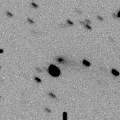
|
It was bright as 14.5 mag in July (July 16, Michael Jager). But now it is 15.4 mag (Aug. 26, Ken-ichi Kadota), getting a bit fainter. It keeps observable in excellent condition while getting fainter gradually until January when it becomes fainter than 18 mag.
Date(TT) R.A. (2000) Decl. Delta r Elong. m1 Best Time(A, h)
Oct. 6 4 2.32 47 52.7 1.707 2.369 119 15.8 3:06 (180, 77)
Oct. 13 4 0.61 48 52.8 1.674 2.395 125 15.9 2:37 (180, 76)
|

|
Now it is 16.6 mag (Aug. 25, Ken-ichi Kadota). It will reach to 12 mag in 2008 summer. In the Northern Hemisphere, it keeps observable almost all time until that while the comet is brightening gradually. However, it goes to the southern sky and will never be observable again in the Northern Hemisphere after that.
Date(TT) R.A. (2000) Decl. Delta r Elong. m1 Best Time(A, h)
Oct. 6 16 38.02 14 52.1 5.219 4.814 60 15.9 19:02 ( 79, 40)
Oct. 13 16 40.74 13 29.1 5.244 4.762 56 15.9 18:52 ( 80, 37)
|

|
Now it is 16.6 mag (Sept. 20, Ken-ichi Kadota). Although it had been observable only in the Southern Hemisphere for a long time, now it becomes observable also in the Northern Hemisphere. It keeps 16 mag until winter.
Date(TT) R.A. (2000) Decl. Delta r Elong. m1 Best Time(A, h)
Oct. 6 3 44.70 -29 56.9 3.825 4.471 124 15.9 2:49 ( 0, 25)
Oct. 13 3 40.83 -29 57.1 3.795 4.479 128 15.9 2:17 ( 0, 25)
|

|
It reached up to 15.5 mag in late 2006 and early 2007. Now it is fading, 16.3 mag (Sept. 7, Ken-ichi Kadota). It locates somewhat low in the south, but it is observable at 16.5 mag in autumn. It will be too low to observe in early 2008, when the comet will be fainter than 17.5 mag.
Date(TT) R.A. (2000) Decl. Delta r Elong. m1 Best Time(A, h)
Oct. 6 3 55.24 -32 33.5 3.699 4.306 121 16.2 2:59 ( 0, 23)
Oct. 13 3 42.84 -33 39.7 3.678 4.332 125 16.2 2:20 ( 0, 21)
|

|
Now it is 16.8 mag (Aug. 8, Ken-ichi Kadota). Before the perihelion passage, it kept 16.5-17 mag and hardly brightened. After the perihelion passage, it seems hardly to be fading.
Date(TT) R.A. (2000) Decl. Delta r Elong. m1 Best Time(A, h)
Oct. 6 3 21.75 54 44.0 2.695 3.322 120 16.2 2:26 (180, 70)
Oct. 13 3 2.79 56 37.0 2.682 3.369 126 16.2 1:40 (180, 68)
|

|
Now it is 17.6 mag (Aug. 30, P. Birtwhistle). It is expected to reach to 11 mag in 2009 summer. Because it moves in the northern sky, it keeps observable until it becomes brightest in the Northern Hemipshere.
Date(TT) R.A. (2000) Decl. Delta r Elong. m1 Best Time(A, h)
Oct. 6 6 35.84 56 6.0 6.315 6.484 95 16.3 4:34 (203, 66)
Oct. 13 6 33.32 57 3.6 6.164 6.436 101 16.2 4:39 (191, 67)
|

|
It already locates high in the morning sky. Although LINEAR reported it as 19 mag in mid September, it must be bright as 16.5 mag actually. It tends to be brightest after the perihelion passage. It will be observable in good condition at 16 mag until winter.
Date(TT) R.A. (2000) Decl. Delta r Elong. m1 Best Time(A, h)
Oct. 6 7 12.28 18 45.0 3.055 3.133 85 16.3 4:34 (299, 62)
Oct. 13 7 18.00 18 23.5 2.967 3.141 90 16.2 4:39 (310, 67)
|
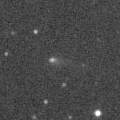
|
Now it is 17.1 mag (Aug. 10, Ken-ichi Kadota). It will reach to 16 mag in October and November. Then it keeps observable in good condition until January when it becomes fainter than 18 mag.
Date(TT) R.A. (2000) Decl. Delta r Elong. m1 Best Time(A, h)
Oct. 6 3 10.53 1 59.2 1.163 2.056 143 16.5 2:14 ( 0, 57)
Oct. 13 3 8.79 1 37.8 1.135 2.061 150 16.4 1:45 ( 0, 57)
|

|
It passed near by the earth in early April, and reached to 8.7 mag (Apr. 10, Werner hasubick). Then it faded down to 11.8 mag on May 26 (Seiichi Yoshida), and became too low to observe in the evening. Now it is 15.2 mag (Aug. 10, Ken-ichi Kadota), fading as expected.
Date(TT) R.A. (2000) Decl. Delta r Elong. m1 Best Time(A, h)
Oct. 6 5 52.87 30 25.4 1.838 2.291 103 16.4 4:34 (312, 83)
Oct. 13 5 30.96 30 48.8 1.760 2.365 115 16.6 4:08 ( 0, 86)
|

|
Although it had been unobservable for a long time, now it is appearing in the morning and getting higher gradually. It must be already bright as 17 mag. It keeps observable at 16.5 mag in good condition for a long time until next April.
Date(TT) R.A. (2000) Decl. Delta r Elong. m1 Best Time(A, h)
Oct. 6 9 43.05 13 54.9 2.523 2.012 48 16.8 4:34 (274, 30)
Oct. 13 9 58.45 12 52.3 2.468 2.013 51 16.7 4:39 (277, 33)
|
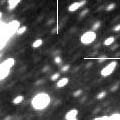
|
Now it is 17.4 mag (Aug. 9, Ken-ichi Kadota). It is outside of Jupiter's orbit. So it keeps 17 mag for a long time until winter. It keeps locating high and observable in good condition for a long time after this because it moves in the northern sky.
Date(TT) R.A. (2000) Decl. Delta r Elong. m1 Best Time(A, h)
Oct. 6 3 6.98 31 38.0 3.329 4.121 137 16.9 2:11 ( 0, 87)
Oct. 13 3 3.53 30 31.6 3.295 4.152 144 16.9 1:40 ( 0, 86)
|

|
Now it is 17.2 mag (Aug. 12, Ken-ichi Kadota). It will be observable at 17 mag for a long time until 2008 autumn.
Date(TT) R.A. (2000) Decl. Delta r Elong. m1 Best Time(A, h)
Oct. 6 19 11.19 16 34.9 5.660 5.877 97 17.0 19:02 ( 34, 69)
Oct. 13 19 9.44 16 22.1 5.766 5.882 91 17.0 18:52 ( 44, 66)
|

|
It will be at opposition and observable in good condition in winter. It will reach to 16 mag.
Date(TT) R.A. (2000) Decl. Delta r Elong. m1 Best Time(A, h)
Oct. 6 7 48.15 21 31.7 4.431 4.322 77 17.1 4:34 (285, 57)
Oct. 13 7 52.79 21 34.9 4.320 4.316 83 17.0 4:39 (292, 63)
|

|
It will reach to 15 mag in 2009 and 2010. In this year, it is observable at 16.5 mag in good condition in autumn and winter.
Date(TT) R.A. (2000) Decl. Delta r Elong. m1 Best Time(A, h)
Oct. 6 5 34.54 22 29.4 3.700 4.122 108 17.1 4:34 (355, 77)
Oct. 13 5 35.42 22 35.1 3.593 4.114 114 17.1 4:11 ( 0, 78)
|

|
Peculiar asteroid moving on a cometary orbit. It was asteroidal at 18 mag in late August. It will reach to 15 mag in February and March. In the Northern Hemisphere, it keeps observable until July when it becomes fainter than 18 mag. It may show a cometary activity after this, although the perihelion distance is somewhat large as 1.8 A.U.
Date(TT) R.A. (2000) Decl. Delta r Elong. m1 Best Time(A, h)
Oct. 6 7 30.83 -7 32.7 2.111 2.141 78 17.5 4:34 (320, 39)
Oct. 13 7 44.17 -9 22.0 2.019 2.101 80 17.4 4:39 (327, 40)
|

|
It keeps observable in good condition in the morning sky while it brightens rapidly. It will reach to 13 mag in early December, and will be visible visually. However, it turns to fade out and move lower very rapidly after Dec. 10, and it will be unobservable within a few days. Then it will never be observable again. It locates somewhat low in the Southern Hemisphere.
Date(TT) R.A. (2000) Decl. Delta r Elong. m1 Best Time(A, h)
Oct. 6 6 54.21 32 14.2 1.421 1.747 90 17.7 4:34 (273, 72)
Oct. 13 7 5.48 32 9.2 1.269 1.682 95 17.4 4:39 (278, 77)
|
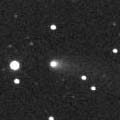
|
It reached to 13.5 mag and became visible visually in 2005 and 2006. Now it has gone far away. But it is observable at 17.5 mag until November.
Date(TT) R.A. (2000) Decl. Delta r Elong. m1 Best Time(A, h)
Oct. 6 2 18.15 7 55.6 3.197 4.134 156 17.6 1:22 ( 0, 63)
Oct. 13 2 13.94 7 39.0 3.179 4.149 164 17.6 0:51 ( 0, 63)
|
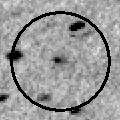
|
Now it is 17.7 mag (Sept. 9, Ken-ichi Kadota). It will be brighter than 18 mag until November.
Date(TT) R.A. (2000) Decl. Delta r Elong. m1 Best Time(A, h)
Oct. 6 23 43.76 -11 44.1 2.013 2.962 157 17.6 22:44 ( 0, 43)
Oct. 13 23 40.65 -12 10.0 2.053 2.961 150 17.6 22:13 ( 0, 43)
|
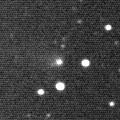
|
It was observed bright as 14-15 mag in 2004 and 2005. Now it is close to the aphelion, but it will be observable at 17.5 mag in good condition in 2007 autumn.
Date(TT) R.A. (2000) Decl. Delta r Elong. m1 Best Time(A, h)
Oct. 6 3 18.33 5 57.2 4.001 4.827 141 17.6 2:22 ( 0, 61)
Oct. 13 3 15.14 5 43.1 3.953 4.837 149 17.6 1:52 ( 0, 61)
|
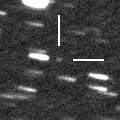
|
Appearing in the morning sky, and observed at 16.7 mag as bright as expected (July 24, E. Guido, G. Sostero). It will be getting higher after this. But it will be fading gradually and becomes fainter than 18 mag in October.
Date(TT) R.A. (2000) Decl. Delta r Elong. m1 Best Time(A, h)
Oct. 6 8 25.57 27 16.0 1.964 1.880 70 17.7 4:34 (269, 52)
Oct. 13 8 40.77 27 14.4 1.925 1.907 73 17.8 4:39 (272, 56)
|

|
It will reach to 13 mag in 2010. Now it is around the aphelion, but it will be observable at 17 mag in good condition in autumn and winter.
Date(TT) R.A. (2000) Decl. Delta r Elong. m1 Best Time(A, h)
Oct. 6 8 42.10 25 30.0 4.766 4.458 66 18.0 4:34 (270, 48)
Oct. 13 8 47.09 25 25.6 4.653 4.447 71 17.9 4:39 (274, 54)
|
|
![]()
 8P/Tuttle
8P/Tuttle 93P/Lovas 1
93P/Lovas 1 C/2006 XA1 ( LINEAR )
C/2006 XA1 ( LINEAR ) C/2006 OF2 ( Broughton )
C/2006 OF2 ( Broughton ) C/2006 K4 ( NEAT )
C/2006 K4 ( NEAT ) C/2006 S5 ( Hill )
C/2006 S5 ( Hill ) P/1990 V1 ( Shoemaker-Levy 1 )
P/1990 V1 ( Shoemaker-Levy 1 ) C/2005 L3 ( McNaught )
C/2005 L3 ( McNaught ) C/2006 U6 ( Spacewatch )
C/2006 U6 ( Spacewatch ) 50P/Arend
50P/Arend C/2006 V1 ( Catalina )
C/2006 V1 ( Catalina ) 46P/Wirtanen
46P/Wirtanen 110P/Hartley 3
110P/Hartley 3 188P/2007 J7 ( LINEAR-Mueller )
188P/2007 J7 ( LINEAR-Mueller ) 17P/Holmes
17P/Holmes C/2007 G1 ( LINEAR )
C/2007 G1 ( LINEAR ) C/2006 K1 ( McNaught )
C/2006 K1 ( McNaught ) C/2005 EL173 ( LONEOS )
C/2005 EL173 ( LONEOS ) C/2006 K3 ( McNaught )
C/2006 K3 ( McNaught ) C/2006 W3 ( Christensen )
C/2006 W3 ( Christensen ) 128P/Shoemaker-Holt 1
128P/Shoemaker-Holt 1 191P/2007 N1 ( McNaught )
191P/2007 N1 ( McNaught ) C/2007 E1 ( Garradd )
C/2007 E1 ( Garradd ) 70P/Kojima
70P/Kojima C/2006 M1 ( LINEAR )
C/2006 M1 ( LINEAR ) C/2005 S4 ( McNaught )
C/2005 S4 ( McNaught ) 173P/2005 T1 ( Mueller 5 )
173P/2005 T1 ( Mueller 5 ) 74P/Smirnova-Chernykh
74P/Smirnova-Chernykh 2005 WY3
2005 WY3 (3200) Phaethon
(3200) Phaethon 117P/Helin-Roman-Alu 1
117P/Helin-Roman-Alu 1 136P/Mueller 3
136P/Mueller 3 P/2004 F3 ( NEAT )
P/2004 F3 ( NEAT ) 108P/Ciffreo
108P/Ciffreo 65P/Gunn
65P/Gunn![]()




























